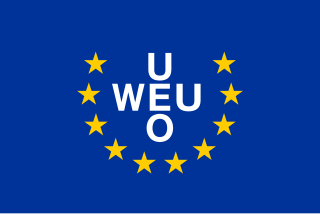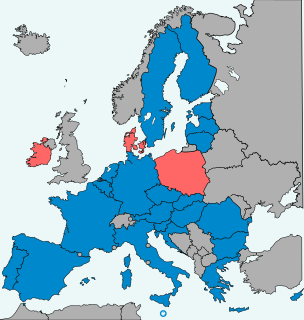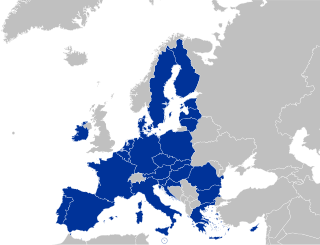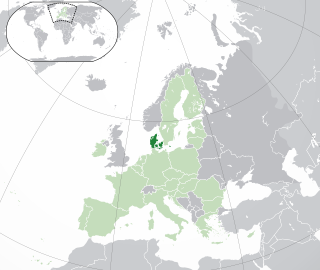

A referendum on the Maastricht Treaty was held in Denmark on 2 June 1992. [1] It was rejected by 50.7% of voters with a turnout of 83.1%. [2] The rejection was considered somewhat of a blow to the process of European integration, although the process continued. The result of the referendum, along with the "petit oui" in the French Maastricht referendum are considered to be signals of the end of the "permissive consensus" on European integration which had existed in most of continental Europe until then. From this point forward issues relating to European integration were subject to much greater scrutiny across much of Europe, and overt euroscepticism gained prominence. [3] Only France, Denmark and Ireland held referendums on Maastricht ratification.

The Maastricht Treaty was signed on 7 February 1992 by the members of the European Community in Maastricht, Netherlands to further European integration. On 9–10 December 1991, the same city hosted the European Council which drafted the treaty. The treaty founded the European Union and established its pillar structure which stayed in place until the Lisbon Treaty came into force in 2009. The treaty also greatly expanded the competences of the EEC/EU and led to the creation of the single European currency, the euro.

Denmark, officially the Kingdom of Denmark, is a Nordic country and the southernmost of the Scandinavian nations. Denmark lies southwest of Sweden and south of Norway, and is bordered to the south by Germany. The Kingdom of Denmark also comprises two autonomous constituent countries in the North Atlantic Ocean: the Faroe Islands and Greenland. Denmark proper consists of a peninsula, Jutland, and an archipelago of 443 named islands, with the largest being Zealand, Funen and the North Jutlandic Island. The islands are characterised by flat, arable land and sandy coasts, low elevation and a temperate climate. Denmark has a total area of 42,924 km2 (16,573 sq mi), land area of 42,394 km2 (16,368 sq mi), and the total area including Greenland and the Faroe Islands is 2,210,579 km2 (853,509 sq mi), and a population of 5.8 million.

European integration is the process of industrial, political, legal, economic, social and cultural integration of states wholly or partially in Europe. European integration has primarily come about through the European Union and its policies.
Contents
As the Maastricht Treaty could only come into effect if all members of the European Union ratified it, the Edinburgh Agreement, negotiated in the months following the referendum, provided Denmark with four exceptions which eventually led to Denmark ratifying the Maastricht Treaty in a 1993 referendum.

The European Union (EU) is a political and economic union of 28 member states that are located primarily in Europe. It has an area of 4,475,757 km2 (1,728,099 sq mi) and an estimated population of about 513 million. The EU has developed an internal single market through a standardised system of laws that apply in all member states in those matters, and only those matters, where members have agreed to act as one. EU policies aim to ensure the free movement of people, goods, services and capital within the internal market, enact legislation in justice and home affairs and maintain common policies on trade, agriculture, fisheries and regional development. For travel within the Schengen Area, passport controls have been abolished. A monetary union was established in 1999 and came into full force in 2002 and is composed of 19 EU member states which use the euro currency.

The Edinburgh Agreement or Edinburgh Decision is a December 1992 agreement reached at a European Council meeting in Edinburgh, Scotland, UK, that granted Denmark four exceptions to the Maastricht Treaty so that it could be ratified by Denmark. This was necessary because, without all member states of the European Union ratifying it, it could not come into effect. Denmark had first rejected the Maastricht treaty, but with the addition of the Edinburgh Agreement, ratified the treaty in a 1993 referendum. The member states that had already ratified the Maastricht Treaty did not have to do so again.












